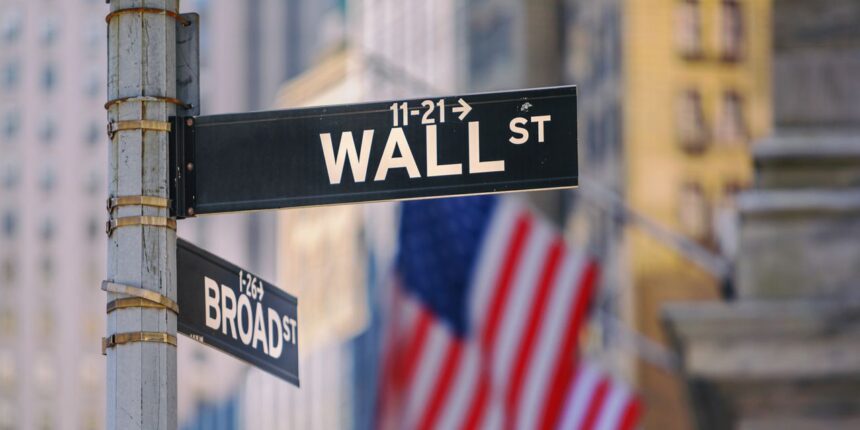U.S. stocks were putting in a mixed performance early Monday as Treasury yields resumed their march higher, after lawmakers over the weekend averted a shutdown of the federal government.
What’s happening
-
The Dow Jones Industrial Average
DJIA
was down 119 points, or 0.4%, at 33,388. -
The S&P 500
SPX
was off 5 points, or 0.1%, at 4,283. -
The Nasdaq Composite
COMP
gained 64 points, or 0.5%, to 13,286.
Stocks closed out a losing September and third quarter on Friday. The S&P 500 fell 4.9% in September to post its worst month of 2023 and declined 3.7% for the quarter. The Dow and Nasdaq also suffered quarterly declines.
Market drivers
“Stocks are facing headwinds from higher interest rates and the uncertainty of how higher rates will affect economic growth and earnings,” Richard Saperstein, chief investment officer at Treasury Partners, said in a note.
Treasury yields extended a rise Monday, with the rate on the 10-year note
BX:TMUBMUSD10Y
jumped 6.6 basis points to 4.638%, its highest since October 2007.
Stocks are “priced for perfection” on expectations for an economic slowdown that will be enough to bring down inflation but avoid a recession, he said.
“It is very hard to see how the Fed and economy will thread this needle, and we believe that markets expect everything to fall into place when it comes to inflation, the economy and rates, and that is a very high bar,” Saperstein said.
The Institute for Supply Management’s manufacturing survey rose to 49.0% last month from 47.8% in August. Economists polled by The Wall Street Journal had forecast the index to register 48% in September.
Numbers below 50% signal contraction. The index has been negative for 11 months in a row for the first time since the 2007-2009 Great Recession.
The Monday session kicks off the final quarter of 2023, a seasonal period that tends to see gains for stocks, particularly as the year draws to a close.
Read: Stock-market seasonality suggests a rally in the fourth quarter. Why this year might be different.
It follows a tough September, when the S&P 500 endured its worst month of the year, down 4.9%, as 10-year Treasury yields surged to their highest level since 2007 amid concerns sticky inflationary pressures would cause the Federal Reserve to keep interest rates higher for longer.
See: ‘Anxiety’ high as stocks fall, yields rise — what to know after S&P’s worst month in 2023
Stopgap legislation that averted a potentially economy-damaging government shutdown provided some early support during Asian trading hours. But Treasury yields moved steadily higher as the session progressed, with investors reasoning it was now more likely the Fed would raise borrowing costs again this cycle.
Fed-funds futures traders priced in a 30.9% probability of a quarter-point rate increase on Nov 1, up from around 18% on Friday.
“Congress averted a shutdown, adopting a stopgap bill that keeps the government open through Nov. 17, meaning data releases (including Friday’s jobs report) will proceed as scheduled. That makes it more likely that Fed officials proceed with a 25bp hike at the Nov. 1 meeting — which remains our base case,” said Richard Hollenhorst, economist at Citi.
Better news from China, where official data over the weekend showed the country’s manufacturing sector in September expanded for the first time in six months, initially helped the mood across global markets — though not China itself, which was shut for the Golden Week holiday.
Tom Lee, head of research at Fundstrat said he was constructive on stocks given the U.S. consumer and economy remain healthy, and this should help corporate profits to rise over coming quarters.
“We remain comfortable with the view that equities can rally into the end of 2023. There has been significant technical damage over the past 8 weeks, and this breakdown is not instantly reversed as we move into October. But…the
price level of the S&P 500 is approaching an area of attractive risk/reward,” Lee said in a note.
There are a number of Fed speakers to start the week, with Chair Jerome Powell and Philadelphia Fed President Patrick Harker expected to make comments at a community event in York, Pennsylvania, at 11 a.m.
New York Fed President John Williams is due to speak at an environmental economics conference at 11:30 a.m., and Cleveland Fed President Loretta Mester is slated to talk at 7:30 p.m. at the 50 Club of Cleveland.
Companies in focus
- Shares of AMC Entertainment Holdings Inc. AMC fell 1.6%, giving up initial gains. Variety reported over the weekend that the makers of a concert film of Beyoncé’s “Renaissance World Tour” are in advanced talked to distribute the film directly through AMC, following its deal to distribute the concert film “Taylor Swift: The Eras Tour” starting Oct. 13. Shares of Marcus Corp. MCS rose 0.8% after Marcus Theatres announced that it would show the concert film.
-
Shares of Tesla Inc.
TSLA,
+0.43%
ticked up 0.1% after the electric-vehicle giant reported third-quarter deliveries that were well below already-lowered expectations. -
Rivian Automotive Inc.
RIVN,
+0.66%
said Monday that it delivered 15,564 vehicles in the third quarter, which was more than double the 6,584 vehicles the electric-vehicle maker delivered in the same period a year ago. Shares gave up early gains to fall 0.5%. -
Nio Inc.’s American depositary receipts
NIO,
-2.21%
were off 2.9%, after the China-based electric-vehicle maker reported a big jump in deliveries for both September and the third quarter, amid the launch of its new EC6 coupe SUV. -
Shares of Kellanova
K,
-6.70% ,
formerly known as Kellogg Co., and the new North America cereals business WK Kellogg Co.
KLG,
-4.16%
were off to a soggy start, with the new stocks falling in their first day of trading following the completion of their separation into two independent public companies. -
SmileDirectClub Inc.’s shares
SDC,
-62.70%
plummeted more than 60% after the teeth-straightening company voluntarily filed for Chapter 11 bankruptcy protection after its founders committed to help recapitalize the company that went public four years ago.







